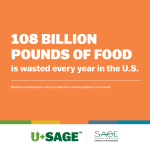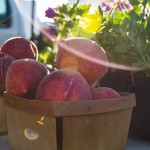You may be wondering what to do with your garden’s abundant harvest. You’re giving away lots of squash, your colanders are overflowing with ripe tomatoes, and your family is tired of eating Eggplant Parmesan.
But there’s another simple and sustainable option ꟷ food preservation. It reduces food waste from large harvests, cuts back on carbon emissions from cross-country shipping and grocery shopping, and allows you to enjoy your veggies well into the winter. Check out these methods:
Freeze
It’s best to freeze veggies when they're at peak flavor. If possible, harvest in the morning and then freeze within a few hours. Vegetables that freeze well include asparagus, broccoli, green beans, sweet peppers, and summer squash.
Wash and blanch vegetables by steaming or scalding in boiling water. Blanching is a necessary step that cleanses vegetables and ensures they keep their color, flavor, and texture - not to mention their vitamins.
Each vegetable has a different ideal blanching time:
- Asparagus - 4-5 minutes steam or 3-4 minutes in water.
- Broccoli - 3-4 minutes steam or 2 minutes in water.
- Green Beans - 2-3 minutes steam or 2 minutes in water.
- Sweet Peppers - no blanching necessary.
- Summer Squash - 2-3 minutes steam or 1-2 minutes in water. Pack in freezer bags or containers.
Pack in freezer bags or containers. Label with freezing date and store.
Dry
Dried veggies are perfect for soups or snacking. Drying, which removes moisture from food to stop the growth of bacteria and yeast, works best in low humidity, low heat, and with good air circulation. Vegetables that dry well include tomatoes, green beans, and peas.
You can purchase a food dehydrator or try these methods:
To dry in oven:
Wash and blanch vegetables by steaming or scalding in boiling water for a short period of time.
Each vegetable has a different ideal blanching time:
- Tomatoes - 3 minutes steam or 1 minute in water.
- Green beans -2-3 minutes steam or 2 in water.
- Peas - 3 minutes steam or 2 in water.
Cut into halves or strips about 1/8” to ¼” thick. Be sure to trim away seeds and cores. Place vegetables on a baking sheet.
Put oven on “keep warm” setting. Leave the oven door propped open a few inches and place a fan near the outside of the oven door for air circulation. Check every few hours; vegetables are considered dried when they are crispy and brittle.
Drying times vary depending on if dehydrator or oven is used.
- Tomatoes - 6-24 hours.
- Green beans -8-14 hours.
- Peas - 8-10 hours.
Cool completely and store in glass jars or plastic freezing containers in a dark, cool location. It’s best to pack dried veggies in amounts that can be used all at once.
To air dry (works well for herbs and hot peppers):
Wash and dry. Tie in a bundle and suspend in a well-ventilated area.
For more information about freezing and drying produce, check out the National Center for Home Food Preservation at nchfp.uga.edu.









